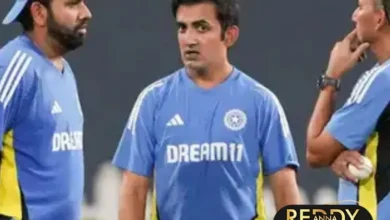Decision Review System (DRS) in Cricket: Revolutionizing Fair Play, Reddy Anna

Cricket, often regarded as a gentleman’s game, has evolved significantly in the past few decades with the introduction of cutting-edge technologies. One of the most groundbreaking advancements is the Decision Review System (DRS). DRS has played a critical role in ensuring fairness, transparency, and accuracy in decision-making, allowing both players and teams to challenge umpiring decisions. This system, although occasionally controversial, has become an indispensable part of modern-day cricket, influencing gameplay and even cricket betting strategies, as seen on platforms like Reddy Anna Sports ID.

In this detailed article, we will dive into the intricacies of the DRS, its history, technological components, impact on the game, and how it has affected cricket betting strategies globally.
1. What is the Decision Review System (DRS)?
The Decision Review System (DRS) is a technology-based system used in cricket to assist the on-field umpires with their decision-making. Introduced in 2008, DRS allows players to request reviews of decisions they believe to be incorrect. Umpires refer the decision to a third umpire who then reviews the available technology, including ball-tracking data, UltraEdge (formerly known as Snickometer), and Hot Spot.
2. Key Components of DRS
Several technological tools work together to ensure DRS delivers accurate results. Let’s break down the most important ones:
1. Ball-Tracking Technology (Hawk-Eye)
- Hawk-Eye tracks the ball’s trajectory to predict its path after hitting the batsman’s pad. This is particularly useful for LBW (Leg Before Wicket) decisions.
- The system uses six high-speed cameras placed around the ground to create a 3D visualization of the ball’s movement.
| Function | Usage in DRS |
| Ball Tracking | For predicting ball trajectory post-impact (LBW) |
| Predicting Bounce | Assesses whether the ball would hit the stumps |
| Post-Pad Trajectory | Predicts whether the ball would hit the stumps after impact with the pad |
2. UltraEdge (Snickometer)
- UltraEdge technology is designed to detect sound waves when the ball makes contact with the bat, pad, or any part of the batsman’s body.
- It is primarily used to review caught-behind and LBW decisions, especially when there is uncertainty over whether the ball touched the bat or glove.
3. Hot Spot
- Hot Spot is a thermal imaging technology that helps detect even the faintest of edges. It works by capturing heat generated from friction when the ball makes contact with the bat or pad.
- While highly effective, Hot Spot is not always used in every series or league due to its high operational cost.
| Component | Primary Function in DRS |
| Hawk-Eye | Tracks ball trajectory and predicts its path |
| UltraEdge | Detects ball-to-bat or ball-to-pad contact via sound |
| Hot Spot | Identifies heat signatures to detect ball contact |
3. History and Evolution of DRS
The Decision Review System was first trialed in a 2008 Test match between India and Sri Lanka. Initially met with skepticism, it has since become a permanent fixture in international cricket. Over the years, several improvements and updates have made the system more accurate and reliable, solidifying its place in the game.
DRS Timeline
| Year | Milestone in DRS |
| 2008 | DRS trialed in Test matches (India vs. Sri Lanka) |
| 2011 | ICC approves DRS for all formats |
| 2013 | UltraEdge technology introduced |
| 2018 | Introduction of DRS in IPL and other leagues |
4. How DRS Works in Different Formats
The use of DRS varies across different formats of the game – Test cricket, One-Day Internationals (ODIs), and T20s. Let’s examine the differences:
Test Cricket
- Teams are allowed two unsuccessful reviews per innings.
- Given the length of the match, more emphasis is placed on making correct decisions, especially for pivotal LBW calls.
One-Day Internationals (ODIs)
- Teams are allowed one unsuccessful review per innings.
- As ODIs are shorter, teams are often more cautious about using reviews early in the match.
T20 Cricket
- Like ODIs, T20 teams are granted one unsuccessful review per innings.
- Since T20 matches are fast-paced, reviews are used sparingly, typically in critical moments like close LBW decisions or disputed catches.
| Format | Number of Reviews | Special Considerations |
| Test Cricket | 2 per innings | Used more frequently due to the longer format |
| ODI | 1 per innings | Teams are conservative with using reviews early |
| T20 | 1 per innings | Often saved for crucial LBW or caught-behind calls |
5. Impact of DRS on Cricket
Fairness and Accuracy
- DRS has reduced umpiring errors significantly, adding an extra layer of accuracy to decision-making. This ensures that crucial moments in a match are judged fairly, preventing incorrect decisions from deciding the outcome of a game.
Team Strategies
- DRS has introduced a new layer of strategy in cricket. Teams now need to be judicious about when to use their reviews, as wasting a review early in the innings could cost them dearly in the final overs.
Influence on Players
- Players are more cautious in their appeals now that DRS exists. Batsmen and bowlers alike are aware that a poor appeal might waste a valuable review, so they have become more selective when challenging umpiring decisions.
6. DRS and Betting Markets
The Decision Review System has had a profound effect on cricket betting markets, especially on platforms like Reddy Anna’s Sports ID. Bettors are now incorporating DRS data into their decision-making, leading to more informed betting strategies. Here’s how DRS has influenced betting markets:
Impact on Live Betting
- In-Play Bets: DRS decisions can drastically change the course of a match, especially during critical LBW or caught-behind reviews. Bettors now have the opportunity to adjust their bets based on real-time decisions.
Betting on DRS Reviews
- Some betting platforms offer markets that focus specifically on the outcome of a DRS review. Bettors can wager on whether a review will result in a decision being overturned, adding an extra dimension to live betting.
| Betting Aspect | Influence of DRS |
| In-Play Betting | DRS decisions can swing odds in favor of one team |
| DRS-Specific Bets | Bettors can wager on the outcome of specific reviews |
| Team Strategy | Knowing when a team will use DRS helps bettors predict outcomes |
7. Famous DRS Moments in Cricket
2019 ICC World Cup Final
- One of the most dramatic uses of DRS occurred during the 2019 World Cup final between England and New Zealand. A crucial LBW review against Jason Roy by New Zealand was rejected by the third umpire, leading to England’s historic win.
India vs. Australia 2017 Test Series
- A series filled with contentious decisions saw India and Australia exhaust their reviews multiple times. In one match, Virat Kohli was given out LBW in a pivotal moment, but the review showed the ball had missed the stumps, overturning the on-field decision.
8. DRS and Umpires: A Love-Hate Relationship
While DRS has been praised for improving accuracy, it has also sparked controversy, especially when it comes to “Umpire’s Call.” Umpire’s Call is a scenario where the technology is inconclusive, so the on-field umpire’s decision stands. This has led to frustration among players and fans who expect absolute precision.
| Type of Decision | Role of Umpire |
| Outright Call | When DRS provides clear evidence to overturn the decision |
| Umpire’s Call | When the decision is inconclusive, and the on-field decision stands |
9. The Debate Over Umpire’s Call
Critics argue that Umpire’s Call undermines the purpose of DRS, as it leads to situations where the same delivery could be considered both “out” or “not out” depending on the on-field umpire’s decision. Proponents, however, believe it retains the human element in a game increasingly dominated by technology.
10. Future of DRS
Potential Improvements
- Standardizing Across Formats: One of the most significant debates surrounding DRS is the inconsistency in its usage across different formats and series. Some argue that the system should be standardized globally to ensure fairness.
- Better Integration with Other Technologies: Future improvements may see more seamless integration of DRS with tools like Hawk-Eye, UltraEdge, and Hot Spot to eliminate any margin of error.
11. Example of DRS in Action
In the 2021 India vs. England series, Virat Kohli was given out LBW early in the innings. However, upon reviewing the decision using DRS, it was revealed that the ball would have missed the stumps by a small margin, overturning the decision and allowing Kohli to continue his innings.
Conclusion
The Decision Review System (DRS) has revolutionized cricket by adding layers of fairness, technology, and strategy. It is not just a tool for players and teams but also a critical element for bettors who analyze every detail before placing their bets. Platforms like Reddy Anna’s Sports ID use these technological advancements to enhance the betting experience, ensuring that fans and bettors alike can enjoy cricket with a new level of precision and excitement.
For further information on cricket and sports betting, feel free to visit our official pages:




